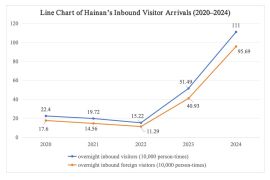This travel pattern of thematic tourism village adds variety to tourism products and the creative economy which further emphasize the unique character of the Labuan Bajo Flores destinationKupang, East Nusa Tenggara (ANTARA) - It will need more than just the development of sea tourism in Labuan Bajo to help it reach its fullest potential as Indonesia's prime tourist destination.
There are many other tourism spots with great potential, and they can flourish if extra attention is given to them.
Among the steps that can be taken to push tourism potential is the development of tourist villages.
To maximize the tourism potential of areas, the central, provincial, and regional governments have sought to develop tourist villages as alternative destinations.
The effort is expected to have a positive multiplier effect, which can change the economic situation for the better, thus offering tangible results for the public.
The development of tourist villages has emerged as a sound option for improving the public economy, which has been shaken by the COVID-19 pandemic.
One such tourist village that will be worth visiting after the pandemic is over is Goa Rangko in West Manggarai district.
Related news: Labuan Bajo Port offers loading, unloading for 2,020-TEU containers
Goa Rangko has reached the top of tourists' to-go lists apart from Padar Island and Pink Beach.
Many people visited the place in the new normal era given its proximity to the beach -- a rare combination of two tourism spots lying so close to each other.
The main draw of the village is its cave filled with stalactites and stalagmites, which lend it a surreal beauty. What adds to its uniqueness is a 7-meter-deep salt water pool, a brilliant, eye-catching shade of blue.
The cave's darkness is diminished by the stalactites and stalagmites that catch the sunlight from the entrance, bathing everything in light. The best time to witness the cave in its sunlit grandeur is 1.30 to 3 p.m. local time.
Traveling to the Cave
The cave is named Goa Rangko given its location near Rangko village, Boleng sub-district, West Manggarai district, East Nusa Tenggara. The cave is just 45 minutes away from the village. To get there, visitors need to rent fishermen's boats from the village's port.
To enter the cave, locals need to shell out Rp10 thousand (less than US$1), domestic visitors Rp20 thousand (more than US$1), and foreign tourists Rp50 thousand (about US$3.5).
The only lighting in the cave is the natural light that shines through the entrance, which leaves the walls of the caves in darkness. The sunlight guides tourists upon the steps and also reflects off the pool.
Related news: Tourist facilities in Komodo Island safe in savannah fire: Police
The village itself is not far from Labuan Bajo City, which is located just 15 kilometers away on the east. On the trip from Labuan Bajo city to Rangko village, visitors can savor views of green hills and the sparkling seas to the northeast of Labuan Bajo.
Rangko village is also known for its cara fish produce, given its reputation as the best out of all the beachside villages in West Manggarai district.
Cara fish is a dried salted fish which is different from cara fish found in other islands, such as papagrang and dawrah in Sulawesi.
The cara fish found in Rangko is slightly smaller in comparison. It is flat, with thin flesh and very low salt content.
Cara fish is sold in dried form and is also marketed as a typical souvenir of Labuan Bajo.
Thematic Tourist Village
The development of its tourism potential has been a positive thing for Rangko village. Prior to the COVID-19 pandemic, the area was always brimming with tourists.
The development of the tourist villages itself was encouraged and pushed by the central government through the Tourism and Creative Economy Ministry, in particular the Labuan Bajo Tourism Authority (BPOLBF).
Related news: Labuan Bajo's authority focuses on three sustainable tourism programs
Support for the facilities and infrastructure development in tourist villages can help create a tranquil, safe, and comfortable travel experience for tourists.
Labuan Bajo Tourism Authority launched 30 thematic tourism villages in Bali in June 2021 in order to support tourism in Labuan Bajo, Rangko village included.
Dozens of thematic tourism villages have been integrated with Labuan Bajo Flores, which includes the islands of Flores, Lembata, Alor, and the Komodo Biosphere Reserve.
"This travel pattern of thematic tourism village adds variety to tourism products and the creative economy which further emphasize the unique character of the Labuan Bajo Flores destination," Shana Fatina, president director of BPOLBF,.said.
Unfortunately, the current pandemic situation has led to tourist villages becoming deserted.
Some time ago in Labuan Bajo, online and offline discussions were held about creating superior products in tourist villages which could be promoted digitally.
Deputy for industry and investment at the Tourism and Creative Economy Ministry, Fadjar Utomo, stressed that post pandemic economic development will require all tourism industry players to change according to market needs, one of which is digital transformation.
Sustainable tourism and an inclusive creative economy have a big scope for development in East Nusa Tenggara.
Four things need to be taken into account to create sustainable tourism development. Sustainable tourist destinations need to be managed with a focus on development of supporting ecosystems such as attractions, amenities, and accessibility.
Local communities need to be economically empowered, and cultural preservation of the community as well as environmental sustainability also need to be considered in the development of sustainable tourism.
Related news: A sneak peek into rengkam paradise Amat Belanda Island
Related news: Tracking the spice trail to Banda
Editor: Fardah Assegaf
Copyright © ANTARA 2021












